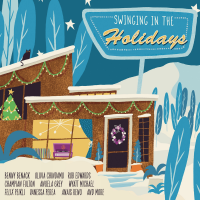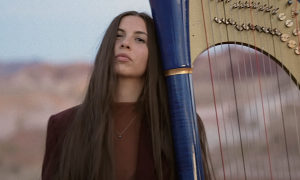Home » Jazz Articles » Interview » Chris Tarry: New Challenges, New Influences, New York
Chris Tarry: New Challenges, New Influences, New York
Some people, especially ones who were big Metalwood fans, ask me, 'how do you make a living playing fusion?' That
 Why would a very successful musician throw his career away to become just another bassist in New York City?
Why would a very successful musician throw his career away to become just another bassist in New York City?Well, Chris Tarry didn't exactly throw his career away. But the Calgary-born, Vancouver-based Tarry was certainly one of the most celebrated bassists in Canada. As a solo artist and one-fourth of the fusion super group Metalwood, Tarry was a serious presence on the Canadian jazz scene and a winner of two Juno Awards (that's the Canadian Grammy, mind you).
And when Tarry moved to New York in 2003, he didn't change his name—his name and experience came with him. He couldn't exactly be just another bassist, either; Tarry's reputation came from his mastery of the electric bass, not the acoustic. While the jazz of the 1970s seemed crammed with electric bassists—Stanley Clarke and Jaco Pastorius come immediately to mind, of course—Tarry is the only electric bassist to have really emerged in the last twenty years in jazz. His technical expertise and understanding of how electric bass can actually work in jazz are indisputable.
Still, Tarry took a great risk relocating to New York, where there are no dearth of great players; certainly, he wasn't the known quantity he was north of the border. But Tarry was, and is, more than a great player. He's a fine writer, and he brought his tunes with him. Today he's one of the workingest sidemen in New York, playing in multiple genres, and has a steady, working band. I spoke with Tarry about his excellent 2006 CD Sorry to Be Strange, which at the time was his most recent album (the brand-new, out-this-minute second recording from the Chris Tarry Group, Almost Certainly Dreaming is just as good as Sorry and further establishes this band as one of the best working today.), the move to New York, the secrets of playing electric bass in jazz music, and a good deal more. The affable, good-humored Tarry is, incidentally, the only person I've spoken to who can use the word "gazillions and make it sound hip.
Chapter Index
- The Chris Tarry Group and Making a Band Record
- Hooking Up With Musicians in New York and Making a Record Sound Like a Bazillion Dollars
- Sorry to Be Strange: Tunes
- More Tunes on Sorry and the Luxury of Having a Steady Group
- Making Little Films and iPod Eclecticism
- Project 33 and Being an Electric Bassist
- Moving to New York: a Good Idea? and Metalwood: Definitely Dead?
- Hooking Up With Musicians in New York and Making a Record Sound Like a Bazillion Dollars
The Chris Tarry Group and Making a Band Record
All About JazzFirst, let's talk about Sorry to Be Strange, your most recent CD and the first, I think, since you became a New Yorker.
This is your first record since the 2003 Project 33 recording, which seems like a sort of unique one-off project. Sorry to Be Strange is a quintet set by a very sympathetic and very together group of New Yorkers—plus you and saxman Kelly Jefferson. It's very much a band recording, unlike, say, your movie-for-the-ears Of Battles Unknown Mysteries (Maximum Jazz) from 2001, which had a rotating cast of a couple different groups and several configurations of players. Certainly, this is not a "listen-to-me-I'm-the-bass-player album. I can always hear you, but you're not acting as the star here, and you haven't exactly boosted your instrument in the mix. So what kind of record did you set out to make? Were you eager to make a really band-ish sort of record?
Chris Tarry: Yeah. I kind of put this band together—with the exception of Kelly Jefferson, who lives in Toronto—when I moved to New York about five years ago. We had started playing, and I had some tunes, and it just sort of evolved that way. I really wanted to capture the band. Like you said, I'd never really done a band record. I was always involved in other people's bands, but when it came time to do my own record, I always wanted to involve all the people that I was playing with as a sideman.
So this is the first chance I had to do a real band record. And my least favorite records in the world are [laughing] bassist records.
AAJ: No, those sometimes don't age very well.
CT: Especially the ones that are about, "Look, here's all the crazy things I can do on this instrument that was never designed for people to do this stuff on in the first place! That's why I think the strongest element should always be the tune. It'll go well if you have a good tune. If people enjoyed playing the music, and the music inspired everybody; to me, that's the best thing. I save all those highfalutin' bass tricks for some crazy gig out there that would actually require that. For my money, I want to listen to records that are, one, kind of eclectic, and two, full of great tunes.
So I'm really psyched to have made a band record, and I'm glad you hear it that way. That's definitely what I was going for.
AAJ: You did this record with some great New York City players: guitarist Pete McCann, drummer Dan Weiss and pianist Jon Cowherd. And Kelly Jefferson, who I think is very underrated south of the Canadian border. Tell me how you ended up with these guys and what they add to the music.
CT: Dan and I had been playing a little bit together when I first came to New York, and I've always loved playing with him. I think he's definitely one of the top drummers of his generation—just a terrific musician. I was playing with Pete McCann in the Mahavishnu Project, and he got me into that band. You know, I pretty much met all these guys the first week I moved to New York. Well, John Cowherd I didn't meet until later. But I've done a lot of playing with him in different situations.
And Kelly has always had this sound that I always like. He was on my last record, he was on this record, and he'll be on my next one as well. He just has this sound that's so flowing and lyrical, and it's a big sound. I just love the way he plays the melodies. And he went to school with Dan and all these guys at the Manhattan School of Music, so everybody knows each other. That's a big thing for me; we have a great time just hanging out.
So I'd played with everyone in different situations in other people's bands, and I love what they do. So I just tried to create a framework where they could do what they do.
AAJ: And some great tunes for them to do it on.
CT: Well, thanks. I keep writing and keep writing, and hopefully it matures over the years. I think since I moved to New York, my writing has gotten a little more New York—whatever that might be. It's definitely an inspiring place to be writing.
class="f-right">
Hooking Up With Musicians in New York and Making a Record Sound Like a Bazillion Dollars
AAJ: Excuse me for missing the point, but I can't help but be interested in the fact that you say you met these guys the first work you came to New York. If I moved there, I wouldn't meet anyone the first week. Did you walk around with your bass in your hand?
CT: I had a lot of friends here already. Ian Froman from Metalwood lives here. I met most people by playing sessions. Or I'd see them at a club, and go talk to them, and then we'd organize a session or something like that. It was pretty much a question of me hitting the ground running in combination with people having heard of me through the success of Metalwood. That's how I was able to hook it up quite quickly. AAJ: Yeah, it's not like you moved there from nowhere and with no résumé.
AAJ: Yeah, it's not like you moved there from nowhere and with no résumé.
CT: Exactly. I came from a pretty successful career in Canada. It did take me a while to get going to the point where I was making a living doing sideman stuff, but it started out pretty easily because I had tunes and I could play. That makes it easy to meet people. That's what I always tell people: "If you've got your own music, get people together and play it. People will hear you, and it's going to lead to other things.
AAJ: I love the sound of this record, which you produced yourself. You know your way around the studio, obviously. But Jon is playing acoustic piano exclusively on this record, isn't he? But this is the Fender Rhodes-iest acoustic piano I've ever heard; there's a reverb and sparkle on it that really has that electric piano quality. He even seems to comp at places like one would on a Rhodes as opposed to a piano. Why am I hearing this?
CT: Well, it was recorded at a small studio here in New York that belongs to a friend of mine who's a pianist—he's also a big piano tuner in the city. So he really knows how to take care of pianos. The studio has a really good piano.
But it's really my friend and business partner, the great engineer Shawn Pierce. He mixes all my stuff, and he's mixed dozens of records for a lot of famous people. Now he does Bill Frisell's stuff. He's just one of the greatest engineers in the world, and I just send the record to him and he mixes it. And that's how it comes back! He lives in Winnipeg, in Canada. So for the next record, I'm going to fly up there and mix it with him—just to save time. But we work well together. He also mixed all the Metalwood records. He's an incredible talent who doesn't get enough recognition.
AAJ: It's great to have a relationship with someone so good, especially in your line of music, where a lot of records are made pretty quickly.
CT: As was this one—we recorded this in just over a day. He's great at dealing with stuff where you give him something that wasn't recorded in a bazillion-dollar studio, and definitely didn't come out of the studio sounding like it came from a bazillion-dollar studio! But [laughing] he makes it sound like a bazillion dollars!
AAJ: That's a lot of dollars.
CT: That is a lot of dollars, especially at fifty dollars an hour—you're getting a hell of a deal.
class="f-right">
Sorry to Be Strange: Tunes
AAJ: Let's talk about some tunes on the CD. "Merry-Go-Round has a Bach-like sort of elegance, and I think that this one—like, say, "Then There Was One —is really marked by a signature sound of this group, which I'll call delicate density. Here you've got your bump-and-run bass, cymbals, piano, guitar, Kelly's sax—everyone's playing. Everyone's busy, but it's not crowded and the playing isn't egotistical—it's a group busy-ness, with a sense of oneness despite all the simultaneous lines, It's a great tune as well, with nice variation of the accompaniment under the piano and your bass solo.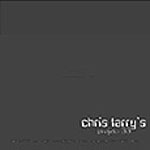 <CT: This was a tune I wrote quite a long time ago. It appeared on a record by Toronto drummer Barry Romberg.
<CT: This was a tune I wrote quite a long time ago. It appeared on a record by Toronto drummer Barry Romberg.
AAJ: Which one?
CT: It was a group called 3 Sisters—it was me, Barry Romberg, Daryl Jahnke and Geoff Young. A two-guitar record.
AAJ: Oh, I'm so embarrassed. Not only have I heard that record [Village (Romhog Records, 2005)], but I reviewed it.
CT: Well, if you wrote that review, you mentioned that you really enjoyed "Merry-Go-Round. It was a very under-promoted record; it just kind of came out. But the reviewers did seem to like that tune.
And I liked it too, but it was never how I envisioned it. I had more of a different group concept for it. So it was actually the oldest tune I had lying around. I'm generally not a fan of rerecording music that's already been recorded, but I thought that this was a strong tune that [laughing] deserved a second shot!
So that's the history of the tune. I think I originally wrote it as a sort of exercise in using ninths—it's got these root-fifth-ninth intervals in it, and I wrote it as an exercise to try to get around the bass in that manner. I wanted to see if it was possible to write this sort of chordal melody without losing the bottom end on the bass. So that's what I came up with.
In terms of how the band approaches it—the thing about this band that I love is that even when people are soloing, it's a group. With every note, there's a trust, and anything can happen at any moment. So the way it sounds on the record just happens to be the way that we played it at that second. We did a couple other takes, and they were all completely different, and all equally good.
And that group sound is really what I'm going for lately. With a drummer like Dan, you never know what you're going to get from tune to tune—which I love. And everybody else in that band does the same thing. When we're on the road or when we're in the studio, I definitely write a sketch for people, and that's it—the tune is just a chalkboard, and anyone can write on it as they wish. They can change it up, and I want that—that's what I'm going for. That's really a jazz concept.
So that tune changes all the time. It goes into swing in the solo section, but sometimes when we do it, it doesn't—sometimes it breaks down into a free thing. Sometimes it goes into a rock groove. I like to play with musicians who can go anywhere at any moment.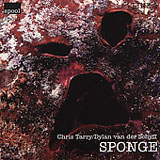 AAJ: It sure makes it fun to tour on the stuff, doesn't it?
AAJ: It sure makes it fun to tour on the stuff, doesn't it?
CT: Oh, man, you should hear it. The pianist now is Henry Hey. Jon couldn't do the tour, and Henry's a great fit with the band. I just finished writing for the next record, which will be done by the end of the year, and it's the same band—just a different pianist.
AAJ: "Yeah Guys! has your monster seven-note bass vamp in the theme before the group goes into some rather spooky improv; there's an odd little interior to the tune with lots of Pete—he sort of plays two solos around Jon's piano solo. It's quite a demonstration of different things this group does well in one tune—that tuneful exterior and then that equally tuneful, but very improvisational center.
CT: This was the first tune I wrote when I moved to New York. I had been listening to a bunch of people around New York, and it seemed like I was hearing some complaints about my tunes—it was always that the melodies were a little too pretty. So I wanted to write something in the vein of [laughing] an unmemorable New York melody!
So I wrote that. Then, when it came time to record it, I knew that a vamp bass line like that can be really repetitive. So I wanted to break it down and then build it back up. The idea was that it would start out in a really slow swing, and then speed up. That was the idea—then everybody just threw the solos around the room. That's how we played it—and that was the first time we played it.
AAJ: This is another that, I suspect, could go in any of a million different directions on tour.
CT: We did, and it became the opening tune. And it was different every single night.
AAJ: Incidentally, that was a pretty daunting criticism you got from those New Yorkers. "Too pretty —how do you sit down and de-prettify something?
CT: Well, the flipside of that is that maybe some of the melodies had been a little too in—so I just took it as an opportunity to write something a little more out.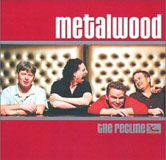 AAJ: I think that "Vienna in the Spring is your first-ever recorded vocal composition, sung here by Leah Siegel. It's a powerful rock/jazz ballad enlivened by Pete's acoustic guitar and Kelly's soprano sax. The production really bolsters the rock/ballad quality, with that whapping snare thump, and her vocal is really out of this world. It's a great song that's rather wonderfully sung, and you wrote the lyrics in addition to the music. Had you ever written lyrics before, and where did this tune come from?
AAJ: I think that "Vienna in the Spring is your first-ever recorded vocal composition, sung here by Leah Siegel. It's a powerful rock/jazz ballad enlivened by Pete's acoustic guitar and Kelly's soprano sax. The production really bolsters the rock/ballad quality, with that whapping snare thump, and her vocal is really out of this world. It's a great song that's rather wonderfully sung, and you wrote the lyrics in addition to the music. Had you ever written lyrics before, and where did this tune come from?
CT: I have done a little bit of pop writing, but not anything that's been published anywhere. I do everything in New York to make a living—I play a lot of jazz music, but I also do a lot of singer-songwriter stuff. So I would say the style of the tune, rather than rock/jazz ballad, is a classic Jeff Buckley-ish singer-songwriter tune. That's sort of what I was going for.
I had just finished recording Leah's latest record—I don't play with her any longer, but I was on her record, and so we were doing a lot of playing around then. So I pretty much wrote the tune for her, because she has that quality to her voice. I wrote the tune and the lyrics and she just came into the studio and sang it in one take. And that was it.
And that kind of tune, placed in the hands of people who maybe don't get a chance to do that kind of stuff all the time, is going to take on more of that jazzy kind of sound. That's why it came out that way. I think it turned out beautifully, and I'm just so proud of it. I really like it.
AAJ: There's no reason this song should fit on the record. But when I hear the album all the way through, it always does fit.
CT: And I grappled with that a lot. I grappled with even putting it on there. Then I tried a bunch of different versions of the record, and I thought that it worked kind of up front in the order—kind of, "What the hell was that? Well, on to the regularly scheduled program. I am a really big believer in the idea that any kind of music is good if it's good. It can all go together on a record if it's good.
And that goes along with the whole concept I have for the band—I try to make it as genre-less as possible. At the same time, I play electric bass, and I try to make electric bass function in a legitimate jazz way. I guess that leads back to not making traditional electric-bass records. I'm not about that.
AAJ: "Then There Was One starts the CD off, and it's more of that "delicate density thing that I keep harping on. This one has a pulsing, vibratory feeling under Kelly's lead tenor, which is deeply melodic yet never overly sentimental.
CT: The solo he takes on that tune is beautiful. I love his pacing in terms of building solos—he's so patient.
AAJ: It's as if he always knows how much time he needs to get where he's going. I think this song seems as representative of this band and what it does as anything here.
CT: I think this one just sort of came out; I'm not sure when I wrote it. It was written in the first year I moved to New York sometime, and it just sort of came out. And you're right, and I hear it the same way. It's definitely the quintessential sound of this band. I think that's because at that point, the band was kind of solidified, and I started to write with that in mind. It was kind of, "Okay, now I know who's in the band. I know what Dan sounds like. I know what Kelly sounds like. I know what Pete sounds like. I'm going to write a tune with all that in mind.
And I think that that's when I do my most successful writing. And that makes me really excited about the next record, because I've written everything for everyone individually in the band. I think, "Oh, this'll be a great part for Henry. Or for Pete, or Kelly. And [laughing] that might be why people say, "How about the bass? Because I'm the last person I get around to. I'm always like, "Oh shit, I've got to write something for myself. So the bass takes on this understated quality. When I get to the studio, I haven't really written anything for the bass.
class="f-right">
More Tunes on Sorry and the Luxury of Having a Steady Group
AAJ: It's kind of nice that your bass part is the last thing you think of. It's often the first thing a writer thinks of—his own instrument. It's nice you have a steady band to write for; in New York, that's a luxury.
CT: It's a real luxury. And it's great that everybody enjoys doing it so much—I mean, I'm a sideman just like everybody else in the band. We all come from the same spot. It's not like I'm some guy that's hiring these guys that are groaningly and grudgingly playing this music that they're not into. It's just a really fun hang. It's a bunch of guys who play together in a lot of different situations—and who are fortunate to get to come together in this thing, this situation.
AAJ: "Universal Traveler is, of course, your cover of the French pop group Air's song from their 2004 Talkie Walkie (Astralwerks) album. You use the same acoustic guitar arpeggios from the original, but on your version it's Pete's acoustic and Jon's piano. Kelly's sax takes the vocal melody before the tunes goes into group improv, and it's funny—I really like Air, but their stuff is so unimprovisatory, so static. The way this group improvises on the song really bursts it open. Why'd you choose to do this tune?
CT: I keep saying, "When I first moved to New York. But [laughing] when I first moved to New York, I was living with a couple people, and one of them was really into Air. I'd never really checked them out. And that song kept coming on, and I thought it would be kind of interesting to do as a instrumental version.
So I wrote it out, and it just sat on the shelf for a while—I didn't really think about doing it. Then, when it came time to do this recording, I pulled it out. I wasn't really sure about it, but everyone in the band seemed to like it, so we went for it. I was happy with how it turned out—especially the outro vamp, where Kelly's playing where it goes out and fades. That was just one of those things I had lying around. Then we ended up playing it on tour, which was really a lot of fun.
And apparently someone gave it to Air! I didn't quite hear what they had to say—I'm always expecting an email from one of the guys in Air mentioning how I messed up their tune.
AAJ: Right, in their broken English.
CT: Exactly. I am curious what they think.
AAJ: How much does this one change live?
CT: It actually got a little better. A little more free-flowing. It's one of the more structured tunes—if you check it out, the form is identical to the way Air does it. AAJ: The solos are, well, solos—that's different.
AAJ: The solos are, well, solos—that's different.
CT: But they're solos over the actual form of the tune. Obviously, they chop their version up in the studio. And it's pretty close to the original tempo, too. Air has this really distinctive drum groove on the original, which was cool, and I liked how Dan incorporated it. I actually wrote it out, and Dan incorporated an essence of it. I wanted to get the essence, and still be loose. The original had some very signature things that made it fun to listen to, and I wanted to keep those elements.
AAJ: "Wind-Up Bird has a super-tight head melody before it goes into some burning electric guitar soloing from Pete with typically interesting Jon comping and a rubbery groove of your bass and Dan's drums. Later Pete's electric does some fine rhythm work under Kelly's solo—it sort of jumps into the rhythm section and then there are the three of you instead of two.
CT: Right, there are some "wock-a-chickas.
AAJ: That's the technical term, yes. It's all really taut; there's a lot of tension and some fascinating thrilling harmonic changes. The head melody sounds hard.
CT: This one has such a lame story behind it. I had just gotten the music software program Sibelius, and I was trying to figure out how to write charts out on Sibelius. As an exercise, I wrote a tune. I wanted to write a complicated tune that entailed [laughing] having a complicated chart! So I wrote that tune just to teach myself how to use Sibelius.
Then we played it and everyone seemed to really enjoy it! So I said, "Okay. The bridge section's chords are actually taken from an old Metalwood tune that we used to play live—just solo changes that evolved over the years. So I took that and combined it with something else, just smushed two things together and came up with the tune.
The funny thing is that that's always the tune that everyone loves to play. Whatever band I bring that tune to, they always love to play that tune. It's certainly the tune I've done on record that I'm the least emotionally attached to. But live, over a three-week tour, it came together. It's a tune that requires a lot of trust, and people have to really know it. Then it just takes off in a really amazing way.
AAJ: It's kind of a barn-burner. It turned out well for a software exercise.
CT: Yeah, it's such a stupid story. I just sequenced it in—I was trying to learn how to import something into Sibelius. So I very quickly wrote that A section, brought it in, and then thought, "Well, I guess I need a B section for this chart. So I put that in, and that was it. Not one of my most inspired efforts.
AAJ: You just need to invent a better story behind it.
CT: Well, some of the songs have a deep jazz story. This one, not so much. I did want to write something in eleven.
AAJ: The story just gets more emotional, doesn't it?
CT: Yes. Nothing says emotion like eleven.
class="f-right">
Making Little Films and iPod Eclecticism
AAJ: I like the little tour film you made of this band on tour—as you note, the same band except for Henry on keys. It's included on the CD. It's an interesting look at the glorious joys of touring—all the indignity. What made you do the video? CT: I've just gotten into doing little films—and finding that I'm actually fairly good at editing stuff. People have told me that I have a knack for editing things together in at least a somewhat-interesting way. Which involves using the minimal amount of footage and making it seem cohesive.
CT: I've just gotten into doing little films—and finding that I'm actually fairly good at editing stuff. People have told me that I have a knack for editing things together in at least a somewhat-interesting way. Which involves using the minimal amount of footage and making it seem cohesive.
So I enjoy it. I'd like to do more of it in the future, maybe some sort of documentary stuff. It's just another form of artistic expression that I am interested in. So I'm glad you like it. It's amazing how many people have told me that they enjoy it.
AAJ: It seemed like a good bunch of guys to tour with. Just traveling is so difficult nowadays, and everyone deals with it in a very good-humored way.
CT: I'm glad that came across. It's also something to do when I get home from a tour—I want to sort of take a few days off, and it's a way to wind down and not play the bass.
AAJ: I was interested in the use of those Palace songs in the video's soundtrack. I didn't expect you to be into Will Oldham.
CT: Well, I just go through my iPod and see what works with the footage. That can make boring footage interesting. And that's why I included that vocal tune on the album. I listen to a lot of different styles of music, and appreciate a lot of styles of music. I think that's where a lot of the young jazz musicians are coming from these days. Of course, there's that history of jazz, and who came before you in the jazz world. But it's also what's happening now. There is a lot of great stuff that's out there now, and I try to use it all as an influence.
AAJ: I don't think it's healthy to listen to only one style of music.
CT: Totally. And all the guys I appreciate feel the same way. Dan Weiss—you would not believe the music that cat listens to. It's just everything; that guy has checked out everything. And to get to his kind of level, that's what you need to do. It's all about checking everything out and having the biggest ears possible. I try to have a big record collection and listen to all of it.
AAJ: I wonder if iPod shuffling hasn't changed some people's concept of music, or their consciousness of it. You listen on shuffle and suddenly every kind of music is next to everything else—it's very democratic, and it places everything in new contexts.
CT: I think you're onto something there. The iPod, in general, has really changed music. And for people like me in the last ten years—anyone who's put out a CD and gets a review that says, "Well, it's too eclectic. Well, you know what? My time has finally come!
class="f-right">
Project 33 and Being an Electric Bassist
AAJ: Let's talk just a bit about your Project 33 recording, which came out in 2003 on the Black Hen label. This is quite different from Sorry to Be Strange—it's like an electronica record, but one where most of the elements are done in real time. There's lots of drum programming from Jesse Zubot, but I think the rest of the instruments are pretty much recorded in real time, like your bass and Kelly Jefferson's sax. The mix gives a deep, artificial separation to the sounds, though. This is a beautiful sounding record—it's real headphone candy.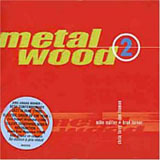 CT: That's pretty much what I wanted to do—a headphoney, vibey kind of record. And everything is recorded live. In fact, although the drums weren't recorded live, they were done with the idea that we would all be playing along with them. I wanted there to be the idea that even though they're prerecorded drums, we were all reacting to them.
CT: That's pretty much what I wanted to do—a headphoney, vibey kind of record. And everything is recorded live. In fact, although the drums weren't recorded live, they were done with the idea that we would all be playing along with them. I wanted there to be the idea that even though they're prerecorded drums, we were all reacting to them.
AAJ: So everyone played together over the drum tracks?
CT: Yeah. It was a three-part process: I sequenced all the tunes, made sequences of them. Then I gave them to Jesse Zubot, who's a great drummer—I gave him versions without the drums. Just the other sequenced parts. So he came up with the drums. Then I stripped all the sequenced parts and took just his drums into the studio, and we all played along with them.
AAJ: Why did you make this record?
CT: I really like the film-scorey side of music, and I wanted to do something that was a little modern. A lot of people were doing that kind of record, but they tended to sound a little thought-out—so I wanted to see if I could join the improvisational element to the pre-programmed drums and see if I could make it work. Plus I'd been playing with [percussionist] Mino Cinelu a lot, and I liked him and wanted to give him a forum to do what he did as well. I thought his being there would make it pretty obvious where the percussion was and the fake drums were, if you know what I mean.
Steve [Dawson] at Black Hen had actually come up to me and said, "Do you have any ideas? And I told him about this project, and he said, "Sure—let's go for it. I had this idea, like I have a bazillion ideas that I get just walking around. When he asked me if I had any ideas, this was really just the first one that fell out of my mouth!
AAJ: You're an electric bassist. Why? How'd you end up specializing on the electric bass, and how is the role of an electric different from an acoustic?
CT: Ooh, that's a good—and big—question. I love the acoustic bass, and in fact I'm playing a lot more acoustic bass these days. I just bought another one recently, and I'm really enjoying it—playing in country bands and jazz gigs. I'm really loving it at the moment.
So I've always loved the sound of the acoustic bass. But I sort of got to the point where I was already playing a lot on the electric bass, and I sort of wanted to make myself get better at the actual act of playing jazz—but I thought that going back and really learning to play the acoustic bass was going to take too long. So instead, I focused on players like Steve Swallow—guys who were building concepts about making the electric bass work in an acoustic jazz setting.
Now, you could never substitute the look of the thing onstage. And I never set out to make the electric bass sound like the acoustic bass. My goal was to make it function like the acoustic, and find concepts that would make that work. There are very few electric guys who have done that. So that's what I went after. I thought, "Why is it that no electric bass players can swing that well? Well, because of this. 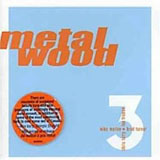 AAJ: Well, what are some of those concepts?
AAJ: Well, what are some of those concepts?
CT: Well, a really basic one that people always overlook is that acoustic bass has a built-in, inherent compression to it. If you're playing with a consistent right hand, all the notes are going to come out at the same volume, and generally at the same length. A lot of electric bass players get into the habit of trying really hard to make it swing—but they tend to really push two and four. They get that mmm-deh, mmm-deh, and that doesn't swing. Swing is more about even, consistent notes that are all the same distance apart and the same volume. That's one concept that takes electric players a long time to get together.
So that was sort of explained to me by some bass players and drummers, and I took it to heart and worked very hard on it. It's fun going back now and playing more acoustic bass, and realizing that those concepts were correct! You know, I always liked the writing aspect of jazz, so I was always writing, and electric bass just happened to be the instrument that I was playing. I guess I gained some sort of technical level on the instrument; I could do things that were considered technically advanced, and I was trying to make it all work in a musical way. Until [laughing] I realized that the best way was not to use any of them at all!
But I'm happy that I took the time and learned how to do all those crazy things.
AAJ: There is still a place for that stuff.
CT: There is. I always really liked the melodic soloing aspect of what could be done on the electric bass, as opposed to the acoustic bass. This is very, very general, but a lot of times if you played a solo on the electric bass that you would play on the acoustic bass, you'd find yourself out of a soloing gig pretty quick. You can be a little bit more vague harmonically on the acoustic sometimes. But the electric bass is so specific that if you play a wrong note, especially down in that octave, people really know it.
AAJ: Are you playing less fretless electric than you used to?
CT: I am, yeah.
AAJ: Is there any fretless on the newest CD?
CT: "Yeah Guys! is fretless. Other than that, no. For some reason, I made a decision back in 2002—maybe because I'd been doing so much fretless with Metalwood and stuff—that even though I enjoyed the fretless sound, it was becoming somewhat one-dimensional for me. I wanted to make sure that wasn't all I could do.
I try to approach every single playing situation differently. Some things call for fretless bass. I do a lot of gigs in New York that just call for my four-string P-Bass, just doing [Motown legend James] Jamerson kind of lines, which I really enjoy. Some of my favorite bass players are Pino Palladino and Donald "Duck Dunn, all those kinds of guys. That's been a real study for me in the last four or five years—that kind of Jamerson thing. You know, you sort of go in and out of different things, and hopefully it all adds up in the end and makes you a well-rounded player. So I just keep plugging away.
Tags
PREVIOUS / NEXT
Support All About Jazz
 All About Jazz has been a pillar of jazz since 1995, championing it as an art form and, more importantly, supporting the musicians who make it. Our enduring commitment has made "AAJ" one of the most culturally important websites of its kind, read by hundreds of thousands of fans, musicians and industry figures every month.
All About Jazz has been a pillar of jazz since 1995, championing it as an art form and, more importantly, supporting the musicians who make it. Our enduring commitment has made "AAJ" one of the most culturally important websites of its kind, read by hundreds of thousands of fans, musicians and industry figures every month.














